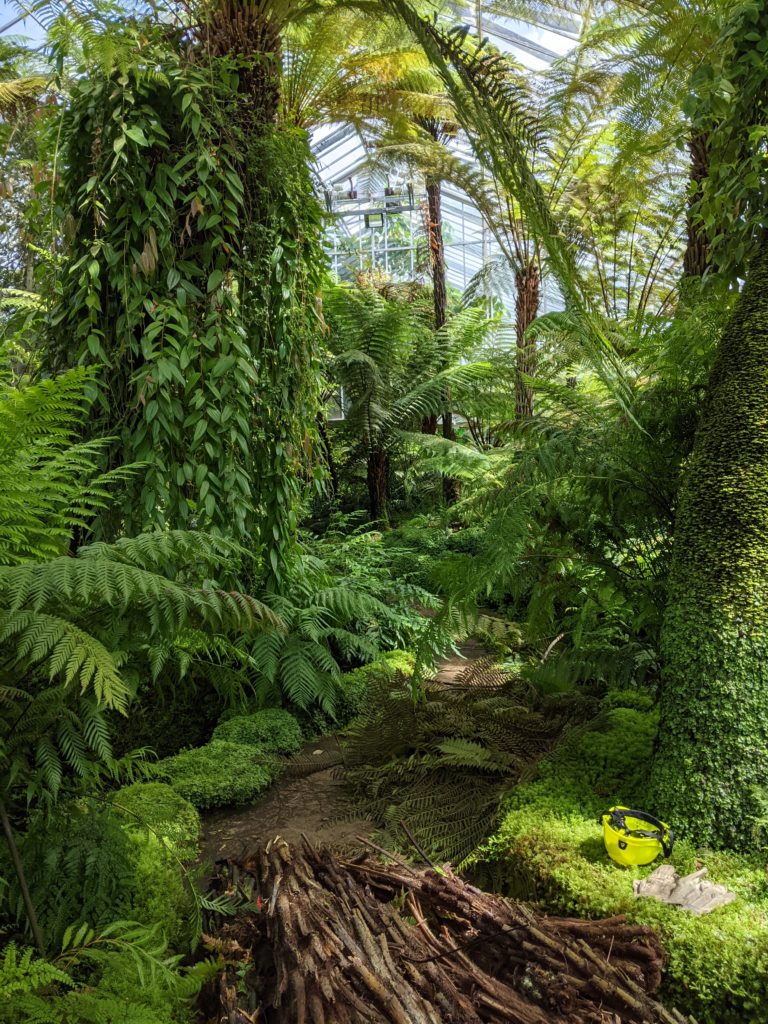
So far, the iconic Temperate Palm House and the Tropical Palm House have been emptied of plants and are ready for refurbishment work to begin. The plants that could be kept have been dug up, potted and are now growing on. Plants from the Temperate Palm House are currently in the Temperate Lands glasshouse and Plants from the Tropical Palm House are split between the Orchid and Cycad glasshouse and the Tropical Support glasshouse.
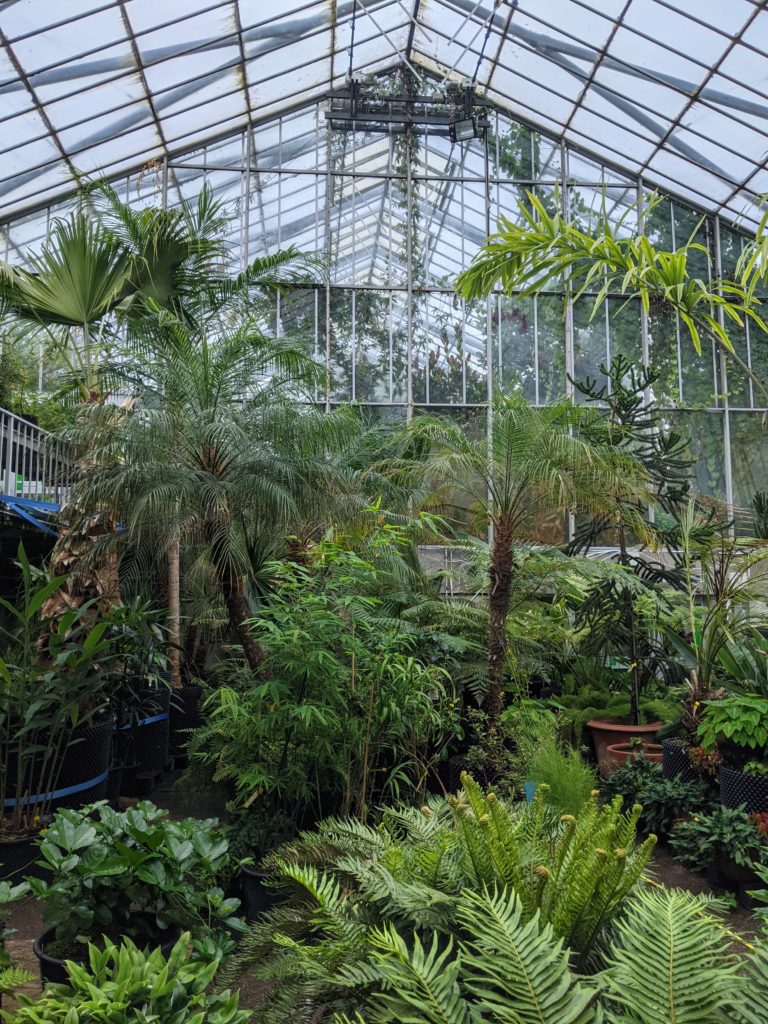
This is an example of the ‘decant’ process involved in the Edinburgh Biomes project, where plants have to be moved between glasshouses with suitable temperature/light/humidity levels for them, until building work is complete and they can be replanted. Complexities will arise as the plants grow and get bigger, but the available glasshouse space for them decreases, or changes, as the refurbishment project gets under way.
The next public display glasshouse that the Horticulture team have begun work on is the Ferns and Fossils glasshouse, aka. the Fern House. We learned a lot about digging up, moving and potting large palm trees during the work on the palm houses and many of the same methods can be applied to the movement of tree ferns. However, the Fern House presents a new set of challenges. For example, in the palm houses the ground was flat and the paths straight, whereas the Fern House is on a slope with winding paths between densely planted beds, which limits the equipment we can use, and makes moving plants around more difficult. Also, the naturalistic display is built of hundreds of rocks which also need to be removed.
Fern decant starts small
We began the fern house ‘decant’ process in April. We dug up one small area as a trial run to create a flat area of ‘hard standing’ in situ where the newly potted plants can be kept for the time being.
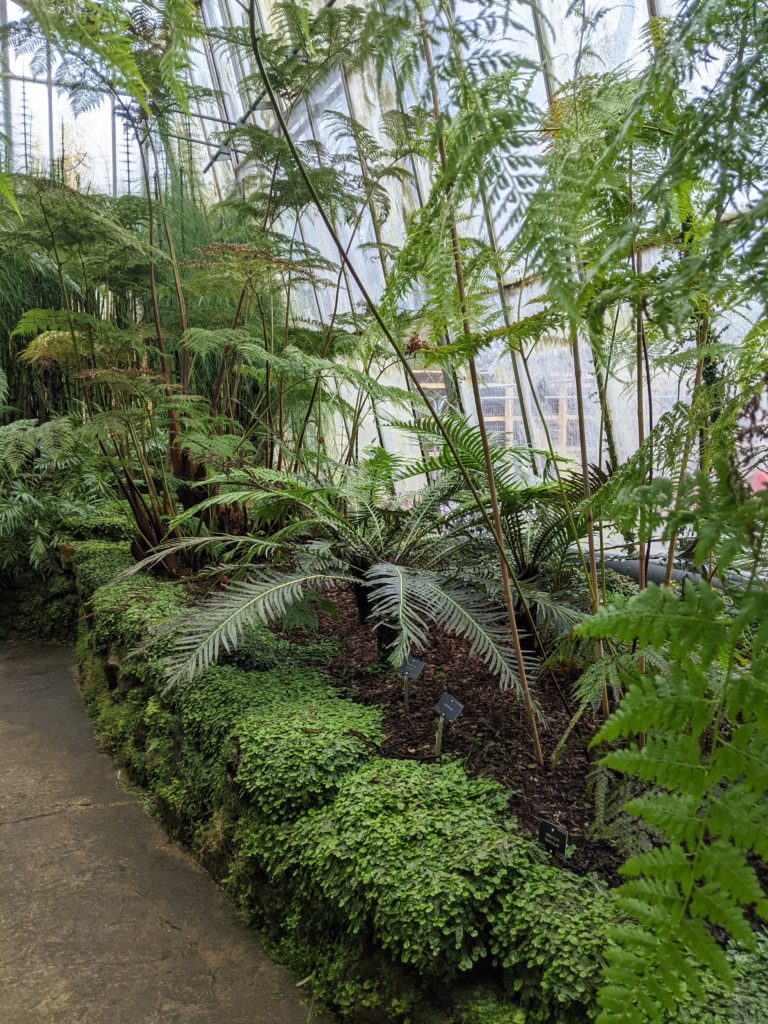
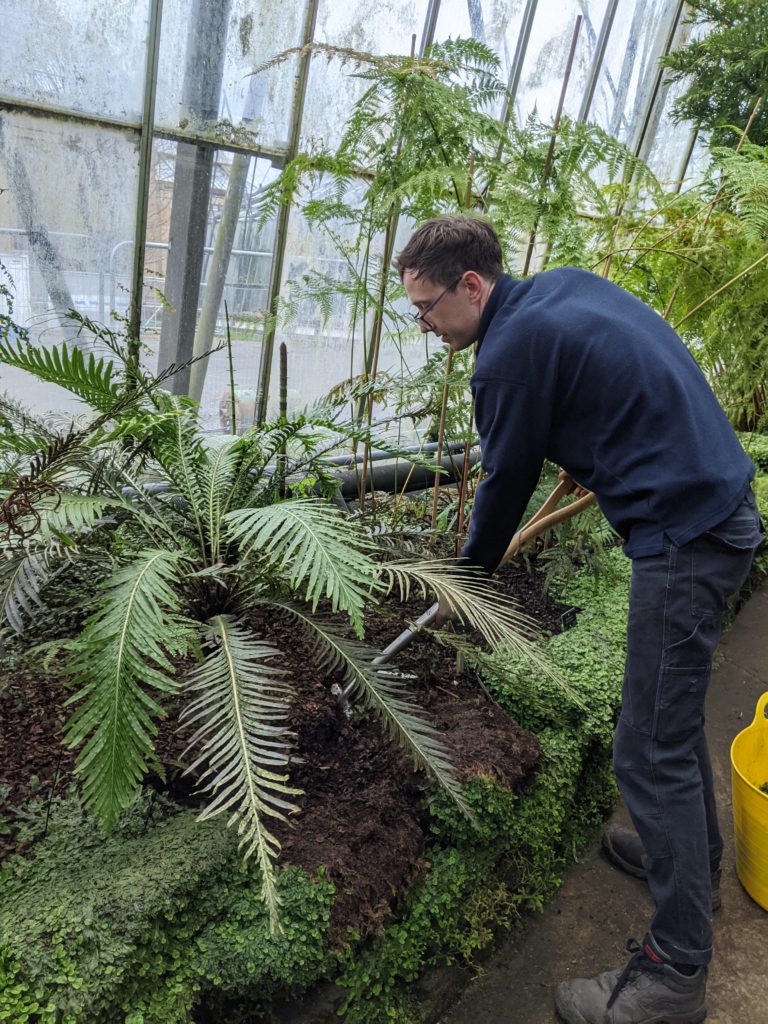
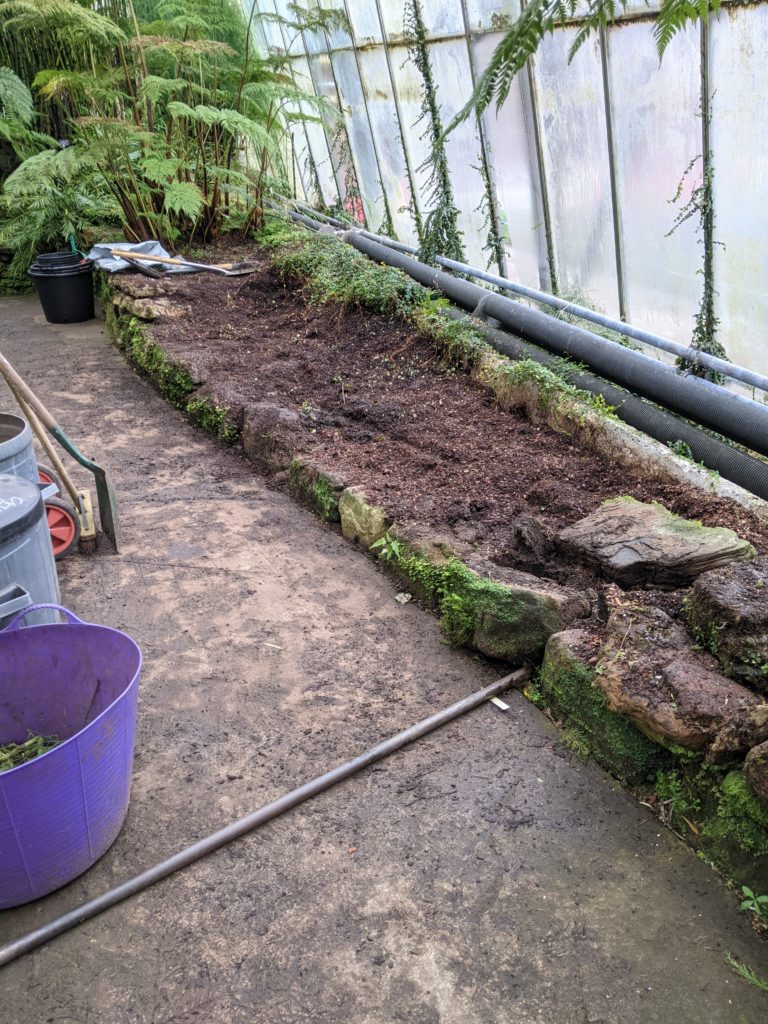
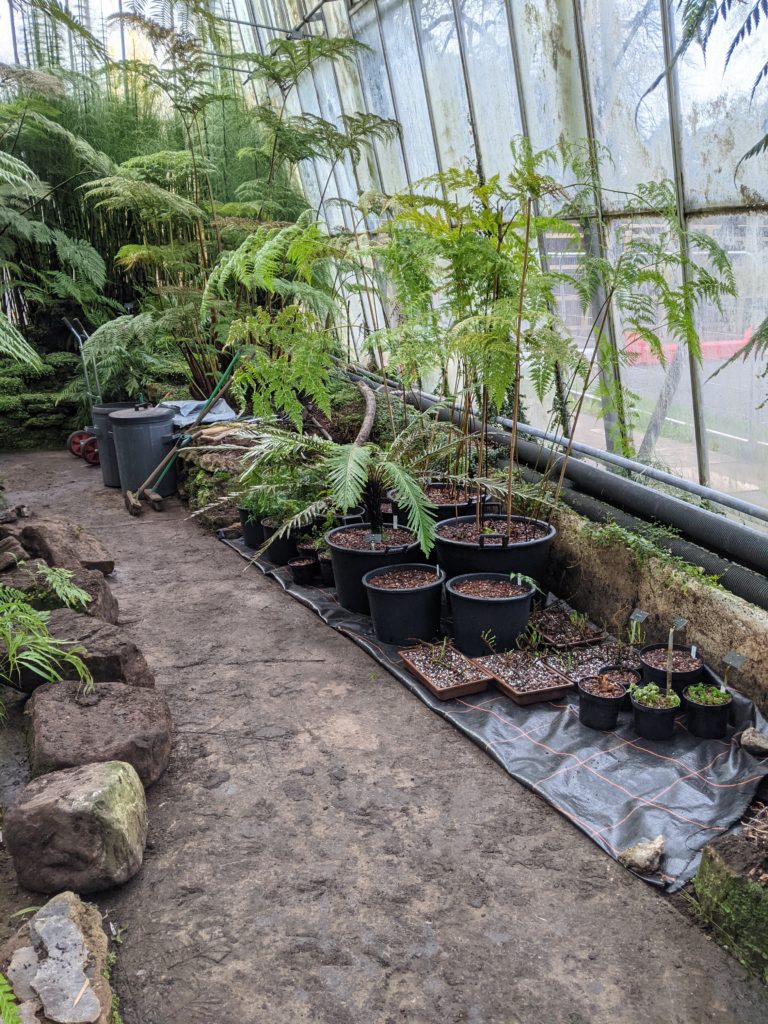
Tackling the Alsophila firma grove
The next area we tackled was a grove of much larger tree ferns, Alsophila firma.
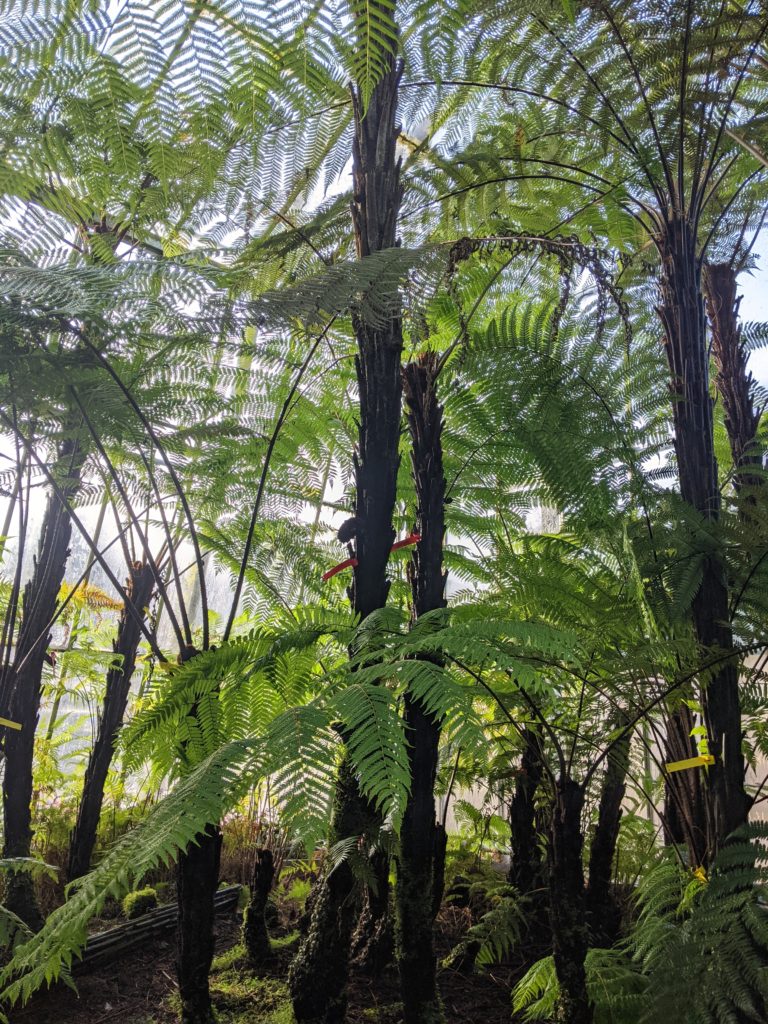
We collected and sowed spores in May which, now at the time of writing in June, have germinated so we have a new crop of baby Alsophilas on the way.
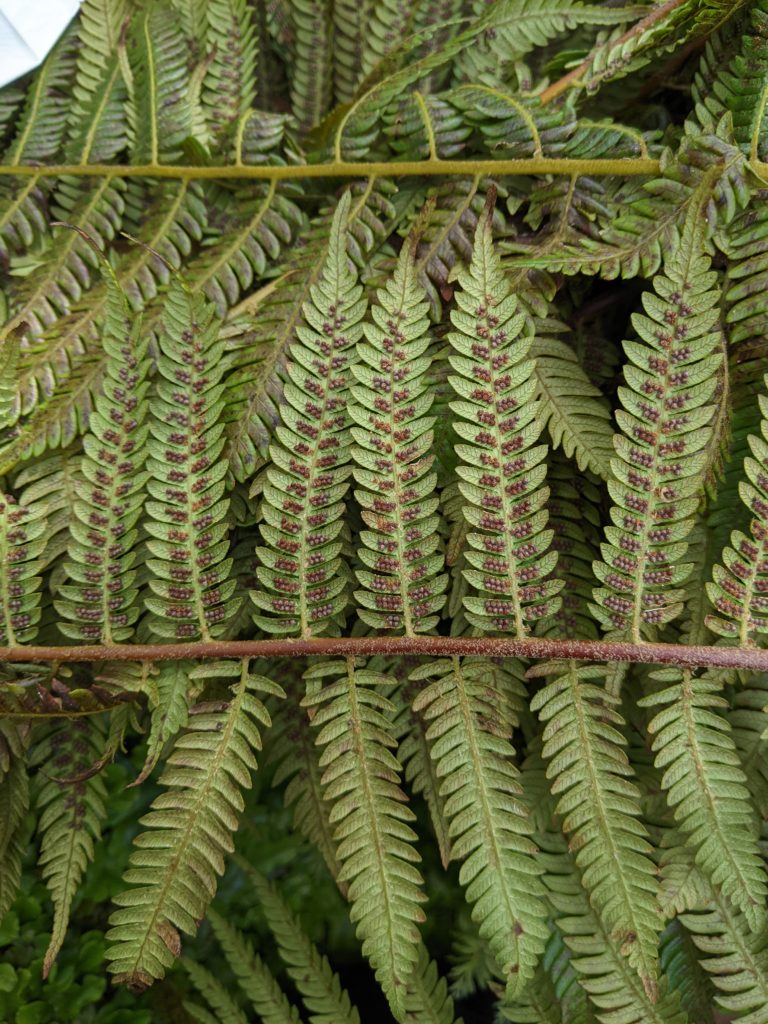
Three Alsophilas had been tagged to keep and the rest were to be removed. To do this, scaffolding was constructed so that the fronds could be removed and then the trunks cut down in sections.
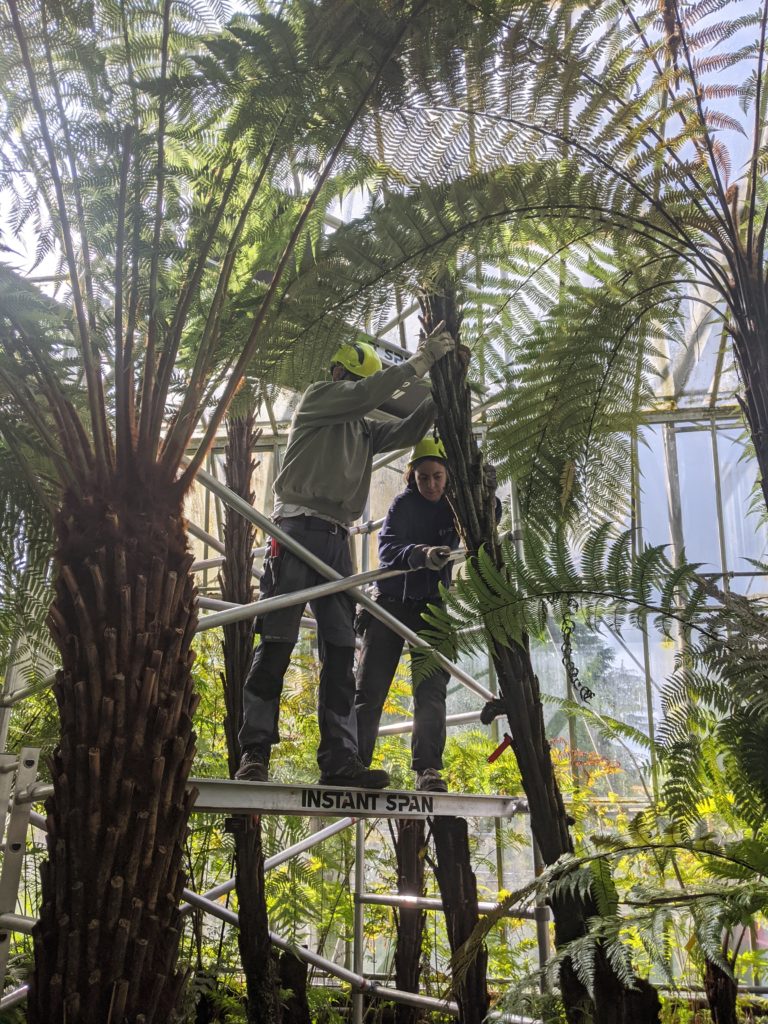
With the larger tree ferns removed we had better access to carefully dig up the smaller ones that we wanted to keep.

The window of time for moving ferns is restricted by when they are flushing, ie. putting out their new fronds. These new fronds are very soft and prone to wilting and are easily damaged so we moved Alsophilas before they flushed so that they could unfurl their new fronds in peace in their new home. We removed the old fronds to reduce moisture loss, but left the lower section of the frond (the rachis) intact to protect the emerging curled fronds, or crosiers.
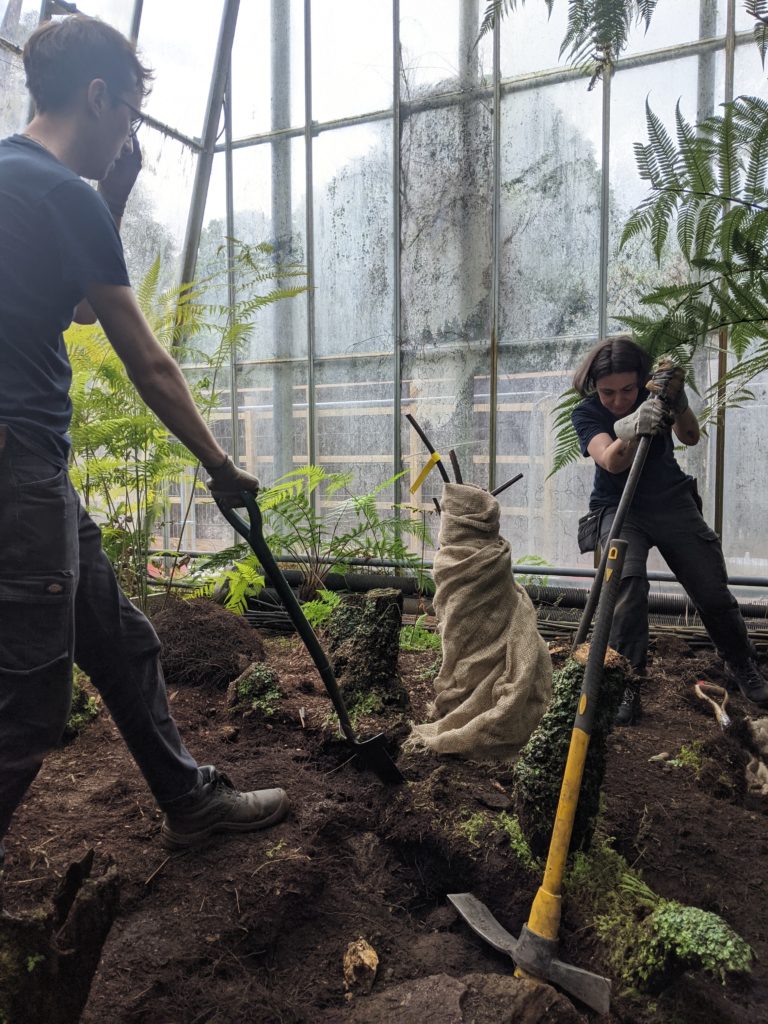
Alsophilas ‘pup’ which means in their case they send out a large rhizome (underground, horizontal trunk) that then pops up new ferns along the way. This means that what might look like several individual plants is in fact one large plant that is all connected underground; this can make digging them up more difficult than it first looks at the outset!
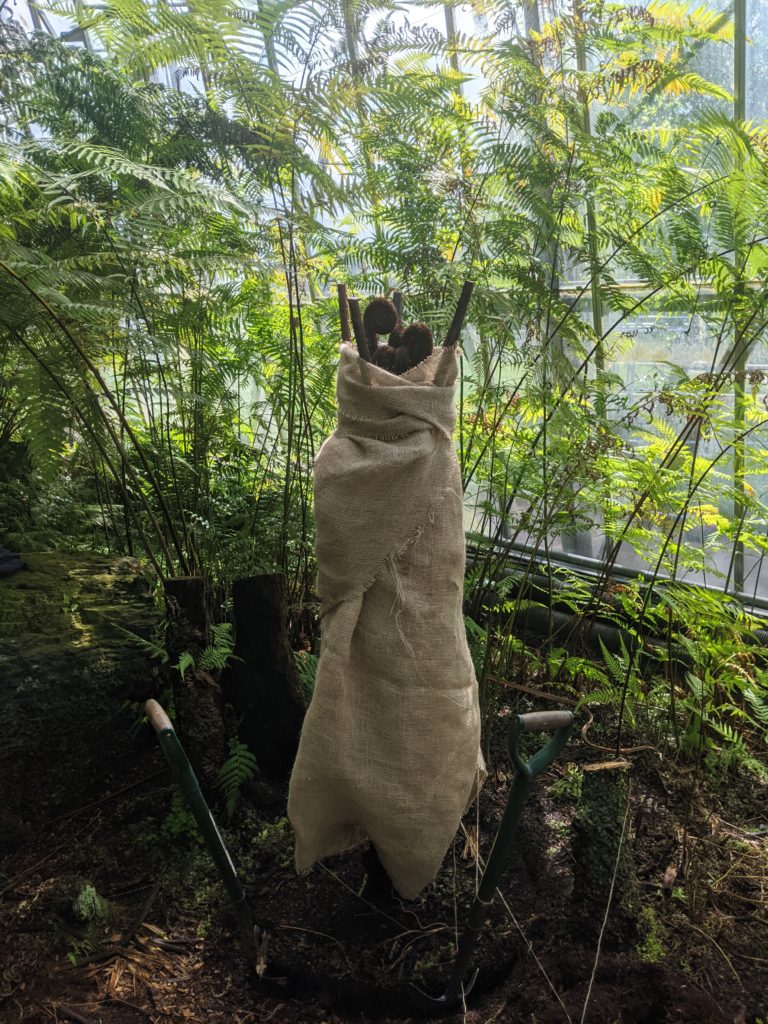
One by one we dug them out and laid then on a flat-bed trolley, then wheeled them down to the Temperate Lands glasshouse.
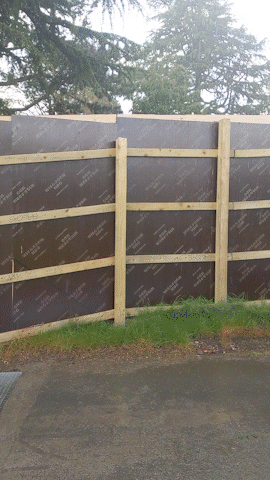
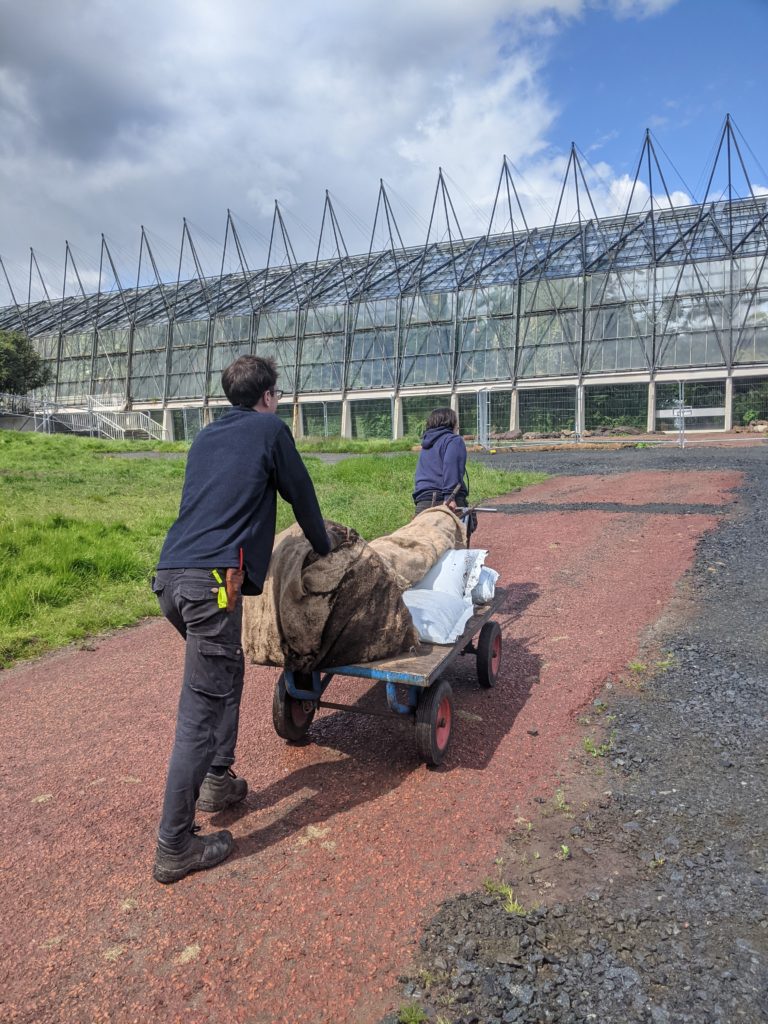
In the Temperate Lands glasshouse we potted up the Alsophilas in Air Pots® using a bespoke bark-based mix we designed for terrestrial ferns, with a slow release fertiliser mixed through.
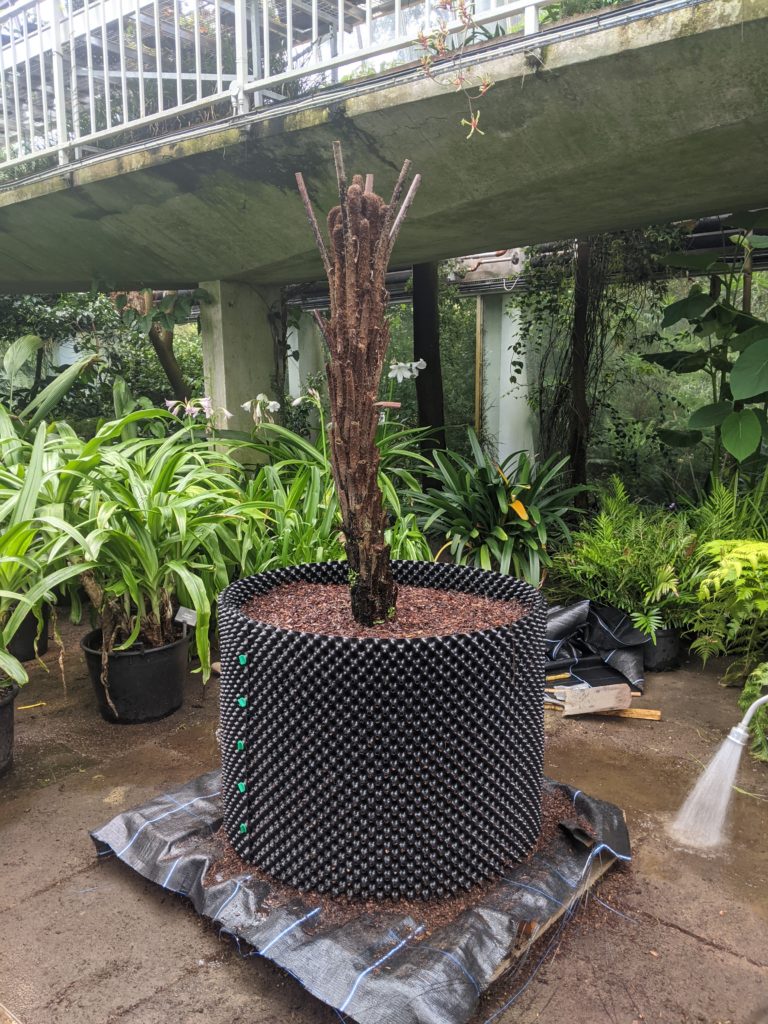
We did this work on the Alsophilas in May and at the time of writing in June they are flushing their new fronds in the Temperate Lands glasshouse.
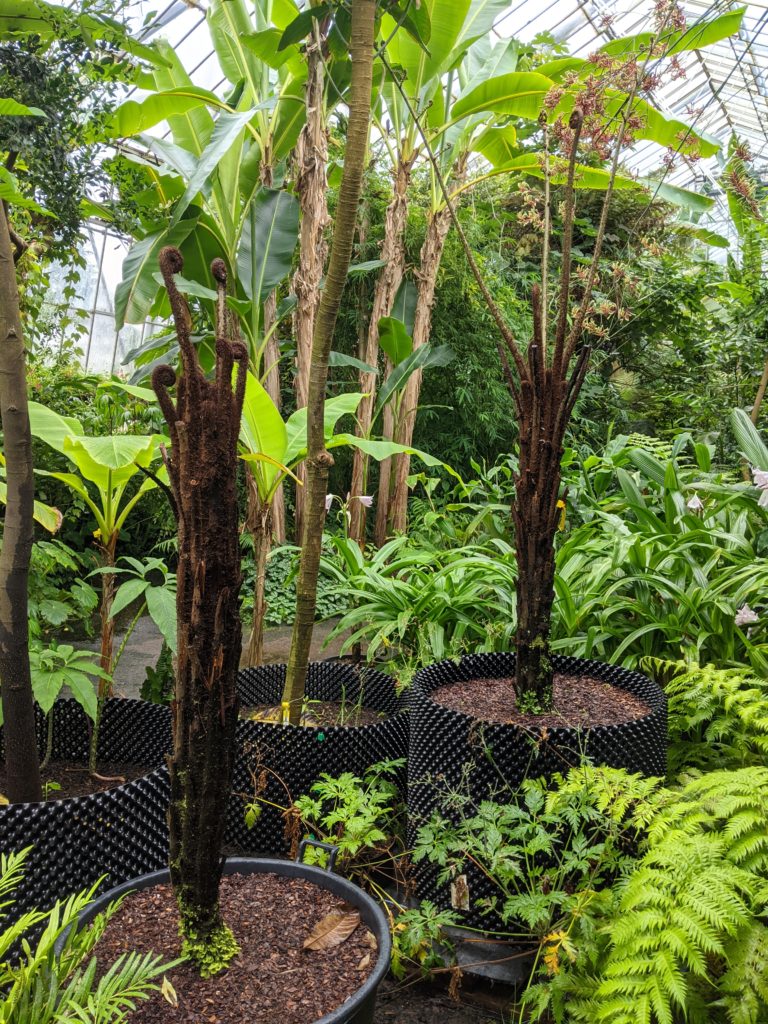
The next stage with the Fern House work is to dig up and either pot or remove the remaining ferns in the Alsophila bed, and then remove the rocks and dig out the soil. We will then level the area to create a hard standing flat surface to keep the next set of plants that we dig up and pot from another area of the house.
